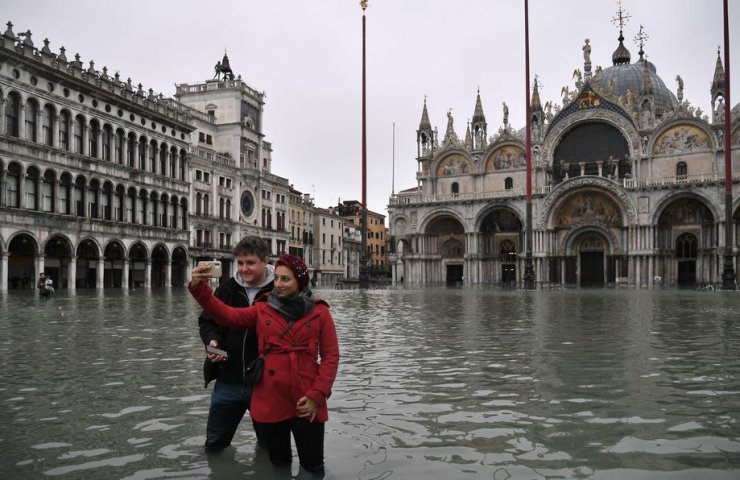New high water in Venice on Monday caused significant damage to almost all buildings in the historic centre: palaces and museums, homes and restaurants, shops and monuments. The water rose to 144 cm, flooding more than 60% of the territory of the ancient Italian city. Levels of flooding in the 100-120 cm above sea level are fairly common in the lagoon and Venice is well-equipped to cope with the floods with the help of rafts and pontoon walkways.
But anything above 120 cm, can flood a large part of the city. On November 13 this year marking the high tide reached 187 cm, which is close to the level of the famous flood of 1966. Tourism industry counts losses: hotel booking has dropped by 40% . But the Venetians resent the most is that such a disaster could have been avoided.
Experts are saying that in recent years the threat of flooding increased due to heavy rains in Northern Italy related to climate change. Other possible explanations of this phenomenon include increasing the level of the seabed as the result of incoming silt and gas extraction in the sea near Venice, undermining the island.
nevertheless, scientists have come up with various ways to protect from water after a catastrophic flood in 1966, and the system of mobile flood barriers called MOSE, is close to completion after years of debate.
the Consortium Consorzio Venezia Nuova, said that next year will begin the final practical test MOSE, a new system of flood protection in Venice. Experimental raising of barriers already planned for 2020.
Residents of Venice are outraged over the inability of the company to run the project MOSE in time for a 187-inch tide, which destroyed the city of the lagoon and killed two people.
the MOSE System should be completed, despite the fact that it is outdated, said the Minister of foreign Affairs Luigi Di Maio.
projects Such as the MOSE, which currently must be running in 2021, was "filled with kickbacks and corruption, but now, although it is not the best possible solution, it should be completed as soon as possible to protect Venice immediately," he said.
"We're not going to pretend that we do not see, what is wine," he said.
To maintain the barrier in the year costs of about 100 million euros.

"the System is functioning sluice gate can be opened, but we need to carry out maintenance and to monitor the most fragile part of the design – loops. We found here part, corroded, cleaned them and replaced, so now everything works as it should", – assured the official representative of the MOSE Monica Ambrosini.
the Construction of structures, service ready, corrosion and rising costs - all of this pushes the date of introduction of the system into operation. Venice relies on technical progress, but as of a century ago, forced to build streets, wooden bridges, as the threat of flooding remains.
the MOSE Project cost 5.5 billion euros, is designed to protect the city of Venice and the Venetian lagoon from flooding. The project is an integrated system consisting of rows of mobile gates that can temporarily isolate the Venetian lagoon from the Adriatic sea during tides.
Along with other measures such as strengthening banks, raising of wharves, paving and improvement of the lagoon, MOSE is designed to protect Venice and the lagoon from tides up to 3 metres (9.8 ft).
the construction of the barrier began in 2003 at the same time at all three entrances to the lagoon, and as of June 2013, more than 85% of the project was completed.





